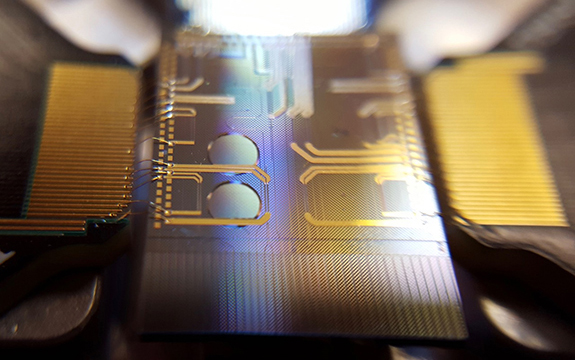Quantum optical micro-combs enable breakthroughs in quantum world

In Summary
- Quantum optical micro-combs have enabled major breakthroughs in the quantum world, ushering in a new era in science and technology
- In a review paper in Nature Photonics, Professor David Moss, Director of the Centre for Micro-Photonics describes the advances that have been made in making these devices smaller and more portable
Compact quantum devices could be incorporated into laptops and mobile phones, thanks in part to small devices called quantum optical micro-combs.
Quantum optical micro-combs are devices that generate very sharp precise frequencies of light an equal distance apart – a bit like the teeth of a comb. They can enable ultrafast processes and could be an important component of quantum computer systems.
In a review paper covering the development of these devices, Professor David Moss, Director of the Centre for Micro-Photonics (CMP) at Swinburne describes the advances that have been made in making these devices smaller and portable enough to be included on a chip.
“These devices will enable an unprecedented level of sophistication in generating entangled photons on a chip – a key breakthrough that, in my opinion, could very well accelerate the quest of achieving so-called ‘quantum supremacy’ – quantum devices that have the ability to perform functions beyond the capability of conventional electronic computers”, says Professor Moss.
A key challenge for quantum science and technology is to develop practical large-scale, systems that can be precisely controlled. Quantum optical micro-combs provide a unique, practical and scalable framework for quantum signal and information processing to help crack the code to ultra-secure telecommunications and greatly advance quantum computing.
Quantum optical micro-combs have achieved record complexity and sophistication in the photon quantum version of a classical computer bit, a QuDit,that can be generated and controlled in the tiny space of a computer chip.
These breakthroughs have shown that compact, highly complex quantum can exist outside of large laboratories, opening the possibility that ultimately- quantum devices could be used in laptops and mobile phones, bringing the vision of powerful optical quantum computers for everyday use closer than ever before.
The review, just published in Nature Photonics, was written with co-authors at the INRS-EMT in Canada, the University of Glasgow in the UK, Harvard University, Purdue University, and Oak Ridge National Laboratories in the USA, and NTT in Japan.

